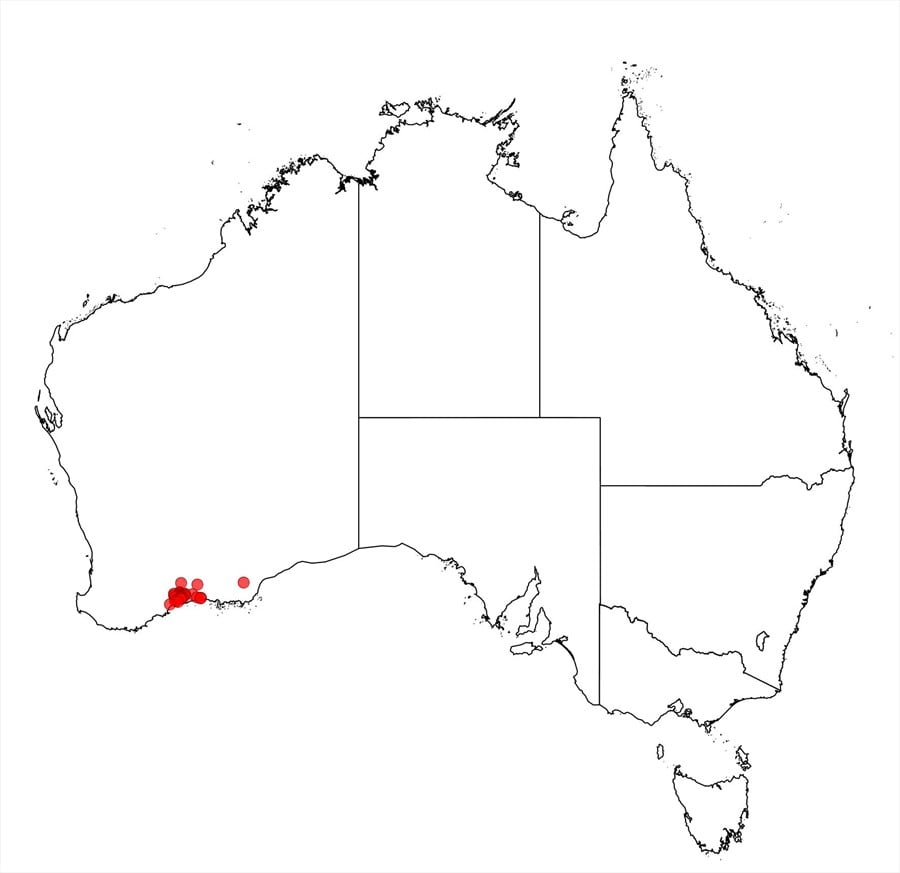Acacia ingrata Benth.
WATTLE
Acacias of Australia
Family
Fabaceae
Distribution
Occurs from Middle Mt Barren E to the Young R., south-western W.A.
Description
Much-branched diffuse shrub, normally 0.2–0.5 m high. Bark light grey. Branchlets hirsutellous or glabrous. Stipule bases commonly persisting as tooth-like projections. Phyllodes subdistant, sessile, patent to slightly reflexed, narrowly triangular to linear or narrowly oblong, 6.5–20 mm long, 1–2 mm wide, pungent, green, glabrous or subglabrous; midrib not prominent; gland basal. Inflorescences mostly 1- or 2-headed racemes; raceme axes 1–2 mm long, often growing out at anthesis; peduncles 3–7 mm long, glabrous or subglabrous; heads sparse, globular, 5–7-flowered, normally cream to white. Flowers 5-merous; sepals 1/3–1/2-united, c. 1/4 length of petals; petals nerveless. Pods submoniliform, to 5 cm long, 4–5.5 mm wide, thinly coriaceous, finely longitudinally reticulate, glabrous, dehiscing along adaxial suture. Seeds longitudinal, elliptic, 4.5–6 mm long, dull, dark brown; aril ±conical, terminal.
Habitat
Grows in often rocky or lateritic clay or clay loam in mallee scrub or heath.
Specimens
W.A.: Bandelup Ck, E of Ravensthorpe, K.M.Allan 165 (MEL, NSW, PERTH); Kundip, C.A.Gardner 2943 (BM, PERTH); 0.8 km W of Young R. Crossing, Ravensthorpe–Esperance road, B.R.Maslin 2552 (AD, CANB, K, NY, PERTH).
Notes
Related to A. plautella. The Murchison R., Oldfield specimen (n.v.) referred to by G.Bentham in the protologue of A. ingrata is probably A. andrewsii. A rare pink-flowered individual was recently discovered near Ravensthorpe.
FOA Reference
Data derived from Flora of Australia Volumes 11A (2001), 11B (2001) and 12 (1998), products of ABRS, ©Commonwealth of Australia
Author
Minor edits by B.R.Maslin & J.Rogers
B.R.Maslin
This identification key and fact sheets are available as a mobile application:
URL: https://apps.lucidcentral.org/wattle/
© Copyright 2018. All rights reserved.










